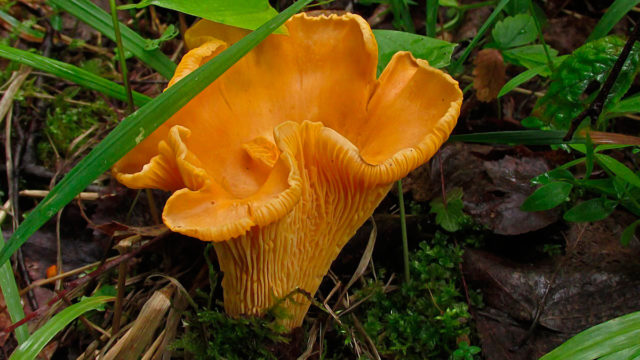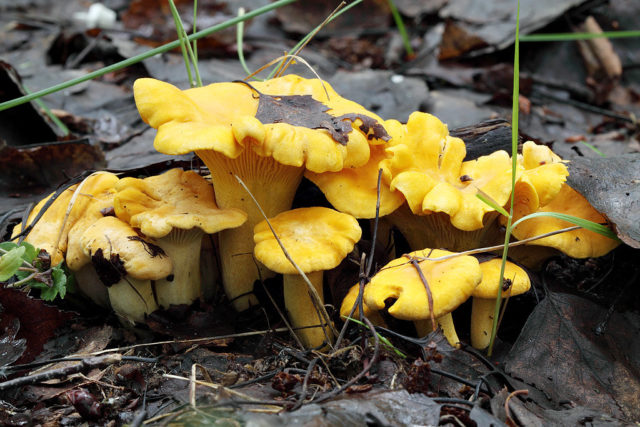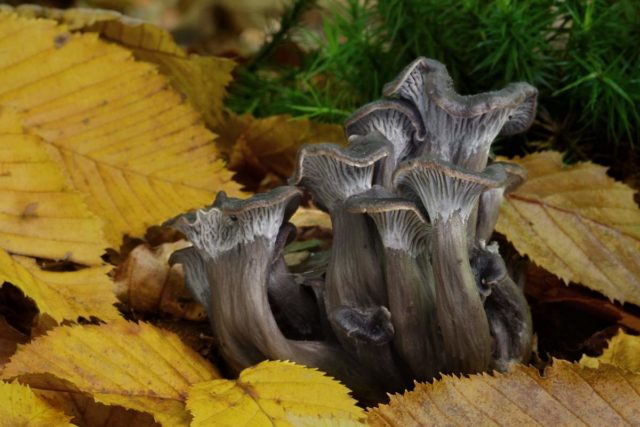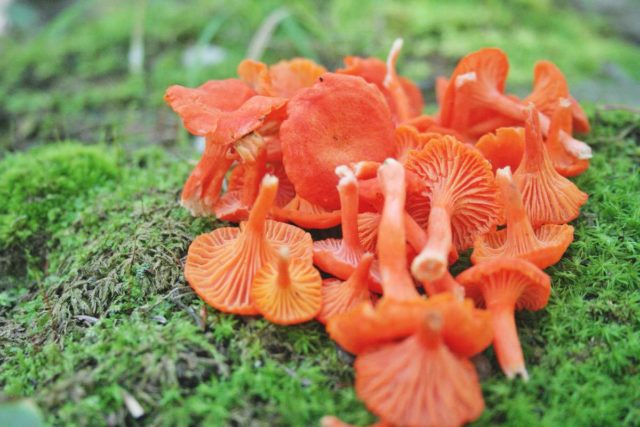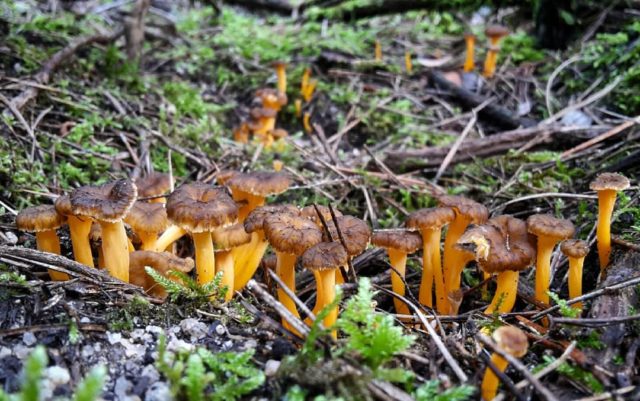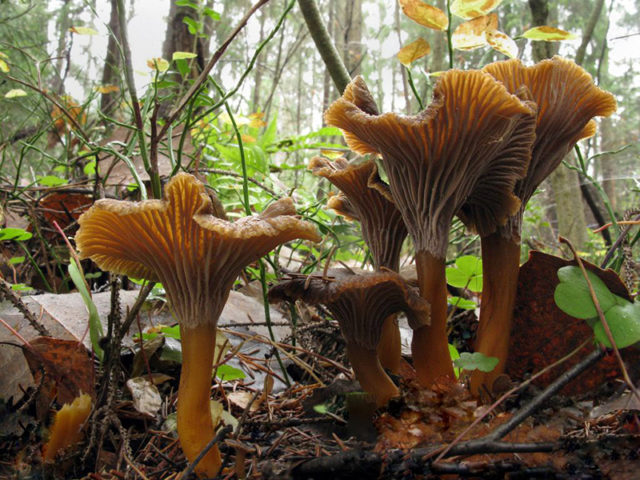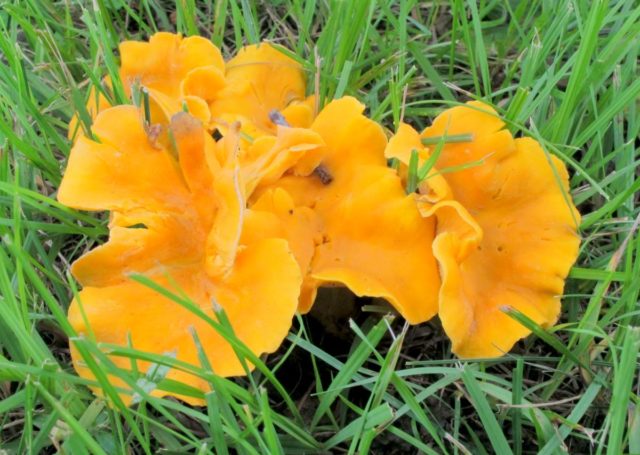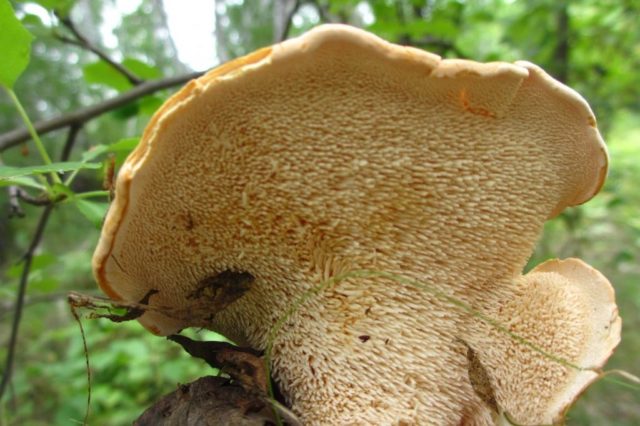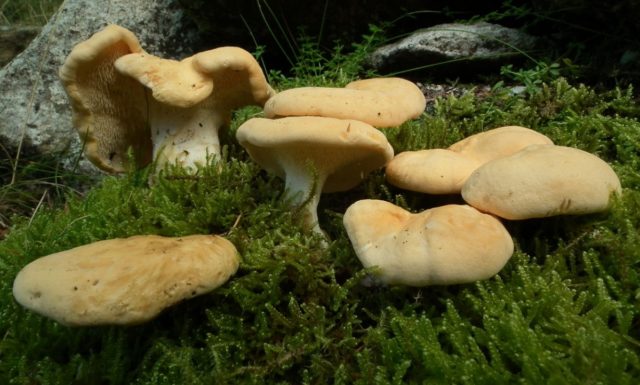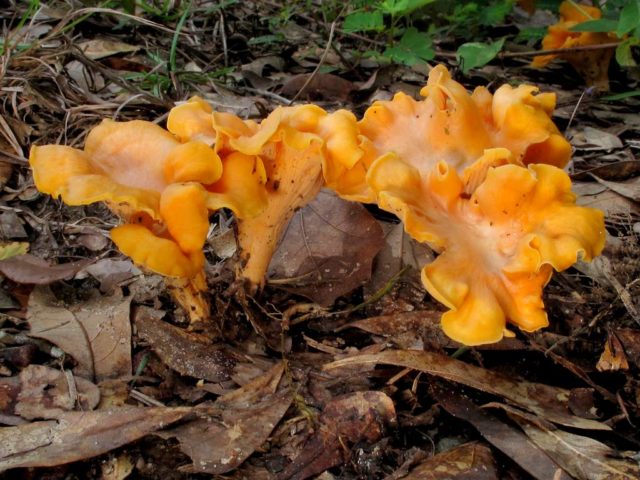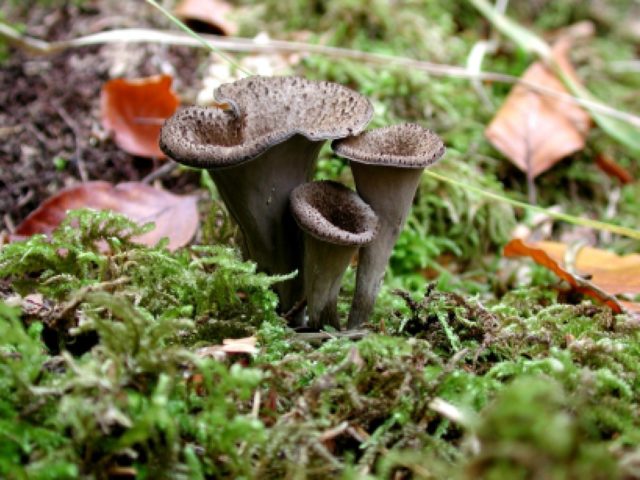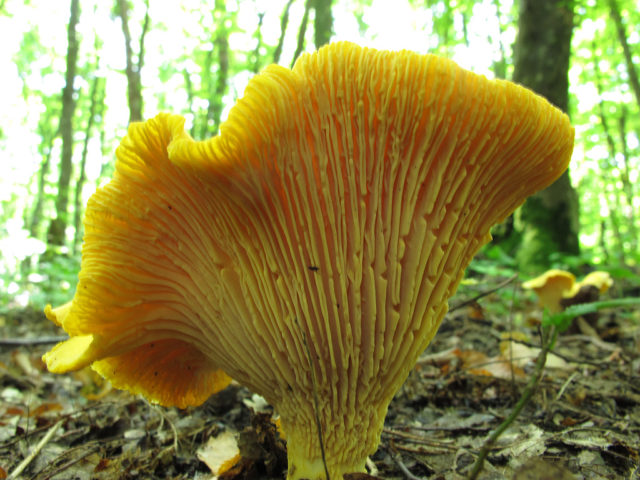Content
Remembering useful mushrooms with a unique chemical composition, one cannot but mention chanterelles. Many adherents of the "quiet hunt" call them "golden flowers" and mention them among their favorites. Unlike other mushrooms, chanterelles are not wormy. They grow in whole families, which makes them much easier to find and collect. The species is very common, photos of chanterelle mushrooms can be found in any mushroom picker guide. Speaking of these cute eukaryotes, most often they mean the common chanterelle or otherwise - the cockerel. There are many other species of chanterelles belonging to related families. Most of them are eaten.
Why was the chanterelle mushroom called chanterelle
It may seem that the chanterelle mushrooms are named after the famous mammal of the Canidae family. This is not entirely true. They are named so because they are also "foxes" (or, from Old Church Slavonic - yellow). Both concepts, which have the root "fox", are used in the meaning of "red" or "fox" suit.
What chanterelle mushrooms look like
The general characteristics of the common chanterelle are familiar to many. It is recognizable by its light yellow or orange color and the characteristic shape of the cap - in the center it is depressed, with wavy edges. As it grows, its diameter increases and can range from 5 to 12 cm. The surface of the cap is smooth or dull, with a thin skin that is difficult to separate. The pulp is dense, fibrous, has a sour taste and a pleasant fruity aroma.
The peculiarity of the structure of the chanterelle mushroom is that its cap and leg do not have a clearly defined border and are a single whole. The leg is of the same shade, solid, massive, slightly narrowed below.
Another feature of chanterelles is a folded hymenophore (a part of a fruit tree that bears a spore-bearing layer). It is formed by shallow plates and runs down to the leg.
Description of the chanterelle mushroom
Chanterelle is a genus of fungi - Basidiomycetes (producing spores in special structures - Basidia). It is especially common in temperate coniferous and mixed forests, loves damp lowlands, where there is a lot of moss, and is also found in dense grass and among fallen leaves. The frequent summer rains contribute to the active growth of mycelium.
The common chanterelle lives in symbiosis with trees - oak, birch, pine. This symbiotic relationship between mycelium and tree roots is called mycorrhiza, or fungus root. Braiding them, the mycelium plays the role of root hairs, making it easier for the tree to absorb nutrients from the soil.
Mushrooms have a complex microelement composition, which provides unique medicinal properties and high nutritional value:
- The substance quinomannose has a detrimental effect on various types of worms, thereby providing a powerful anthelmintic effect.
- Ergosterol is involved in the restoration of liver cells, helps to fight the effects of hypatitis and other liver diseases.
- The high content of zinc and copper has a beneficial effect on the condition of the mucous membranes of the eyes.
- Low calorie content makes it possible to include the product in the treatment menu in the fight against obesity.
- The high content of vitamin D stimulates the growth and development of bone tissue in fractures and diseases of the bone apparatus.
- The high content of vitamin C makes mushrooms an effective medicine that helps in the treatment of infectious diseases, pustular skin lesions.
At the same time, these mushrooms are quite difficult to digest. They are not recommended for small children, women during pregnancy and persons suffering from acute disruption of the gastrointestinal tract. In people with an allergic mood of the body, they can cause unwanted reactions.
Varieties of chanterelle mushrooms
Chanterelle is a very popular mushroom, as evidenced by numerous photos and descriptions. There are similar varieties that share common characteristics. The most famous types of edible chanterelles, but there are conditionally edible and even poisonous specimens.
Chanterelle gray
The species belongs to edible mushrooms, the name of which determined the light gray shade of the cap. Its diameter does not exceed 6 cm. The mushroom does not have a pronounced aroma and taste, therefore it is not popular with mushroom pickers.
The fruiting time for chanterelle is from late July to October. It is found in the forests of Russia, Ukraine, America and Western Europe.
Cinnabar red chanterelle
This edible mushroom with good taste is named after the pink-red hue of the cap. It is small, its diameter does not exceed 4 cm, the height of the leg is also up to 4 cm. The shape of the cap is traditional - uneven, wavy edges and a concave center. The cinnabar red chanterelle has a pseudoplate or folded pink hymenophore.
The fungus grows in the forests of North America, where it is popular with mushroom pickers. It bears fruit all summer, capturing most of the fall.
Chanterelle velvety
An edible variety, rarely found, mainly in the forests of southeastern Europe. The variety grows only on acidic soils, next to deciduous trees. The upper skin is slightly velvety to the touch, resembles felt, has a bright orange tint. The shape of the cap is flat at first, but eventually becomes funnel-shaped, with curly edges.
The fruiting period is long - from May to mid-October. The species grows singly or in small colonies and is prized for its pleasant smell and taste.
Chanterelle yellowing
It belongs to the edible variety, although it does not have the characteristic mushroom taste and smell. The hat is 8 cm in diameter and the leg is 5 cm in height. The hymenophore is strongly descending.
The surface of the cap is yellow-brown, the leg is brighter. The pulp is dense, beige, tasteless.
The fungus is found in coniferous forests: in those places where the soil is sufficiently moist.
Tubular chanterelle
The tubular variety can be eaten. There are large specimens of this size, which:
- concave cap - up to 6 cm in diameter;
- leg - 8 cm high.
The surface of the mushroom is scaly, gray-yellow tones. The dense pulp has a bitter taste, so it needs soaking during cooking. The fungus hymenophore is folded.
Myceliums are found in the forests of North America and Europe, under conifers, less often deciduous trees.
Faceted chanterelle
The edible mushroom of the Chanterelle family bears a resemblance to the common chanterelle. It has a cap-legged fruiting body with a wavy upper part and a smooth descending hymenophore. Its cap can reach 10 cm in diameter. The pulp has a dense consistency, appreciated for its pleasant smell and taste.
This species grows in the oak forests of North America, forming a symbiotic mycorrhizal connection with the roots of trees.
Hericium yellow
A large mushroom with an uneven, bumpy cap of an irregular shape, light ocher shade, up to 15 cm in diameter, has a hymenophore descending to the stem, consisting of soft spines that give some resemblance to a hedgehog. The stem of the mushroom is quite long - up to 8 cm. Several specimens often grow together, forming the so-called bundles.
Hericium has a firm, brittle flesh with a pleasant smell.It is recommended to eat only young mushrooms, as they begin to taste bitter with age.
Hericium is found in the forests of Siberia and the Far East, loves deciduous and coniferous trees, with which it forms mycorrhiza. It grows in lowlands covered with moss. Fruiting mainly in the second half of summer, up to frost. It is appreciated by mushroom pickers for its taste and can be subjected to any kind of culinary treatment.
False chanterelle
The mushroom is a conditionally edible variety that is not recommended for consumption. The diameter of its cap reaches 6 cm, the leg is thin, up to 5 cm in height. The main signs of a false chanterelle are a brighter color, a lamellar hymenophore with strongly branched plates, colored much brighter than the cap.
The description of various types of chanterelle mushrooms can be continued further, because in total there are about 60 varieties known.
Interesting facts about chanterelle mushrooms
The valuable medicinal properties of mushrooms are used in the Chinese and European pharmaceutical industries. Large quantities are purchased for use in a wide variety of medical and pharmaceutical fields. The reason for this is the unique composition:
- The substances beta-glucan and selenium contained in chanterelles are good immunostimulants, therefore they are useful for various immunodeficiency conditions, including HIV infection. When consumed in the autumn-winter period, the risk of viral infections is significantly reduced;
- Chanterelles contain high-quality vegetable protein that can successfully replace animal proteins;
- Another of their properties is the inhibition of the development of pathological cells in the body, due to the content of powerful antioxidants. They deactivate free radicals and promote the elimination of radionuclides from the body;
- Due to the content of a large amount of quinnomanosis in the pulp, mushrooms are purchased by pharmaceutical companies. The tool is included in the composition of modern anthelmintic drugs;
- Mushrooms that have undergone heat treatment lose a significant part of their nutrients. In folk medicine, dried chanterelle powder is used. To prepare for the course of treatment, take 5 medium-sized mushrooms. They are thoroughly dried and crushed. It turns out a kind of seasoning. It contains the entire complex of trace elements of fresh mushrooms and is added to ready-made food. The course of treatment is 10 days;
- Chanterelles are rather fatty mushrooms. They contain a significant amount of vegetable fat (about 2.4%).
Photo of chanterelle mushrooms in the forest
Conclusion
Numerous photos of chanterelle mushrooms give an idea of how diverse this species is. It includes both common and exotic endangered specimens. This diversity is the result of many years of evolution, the goal of which is to ensure the natural stability of this species.
